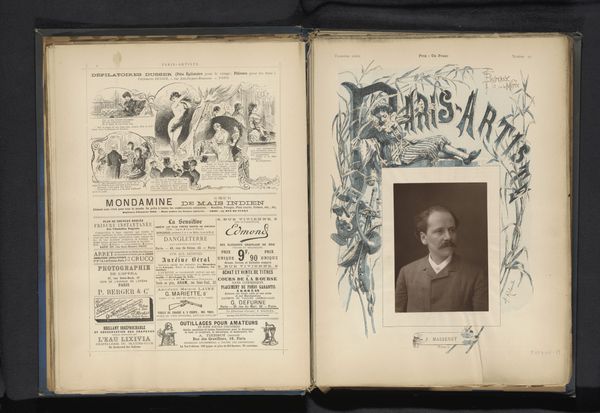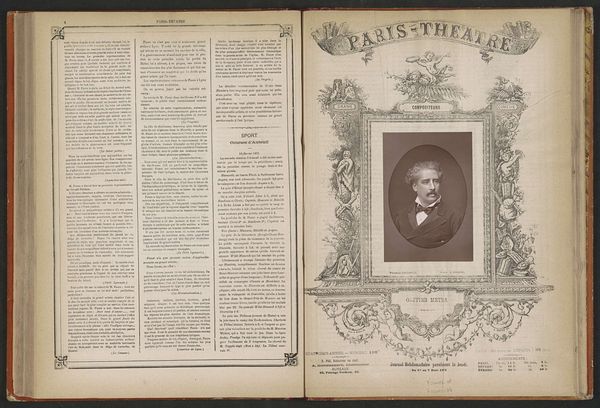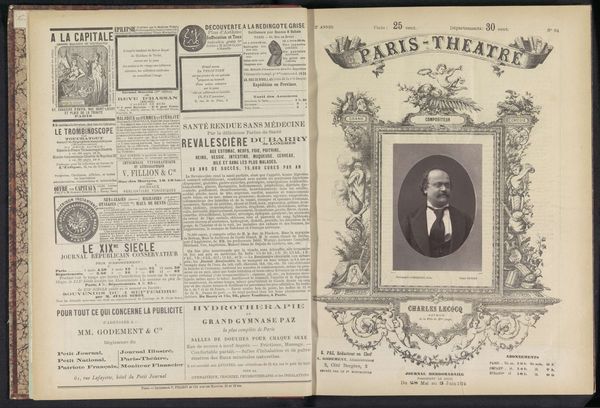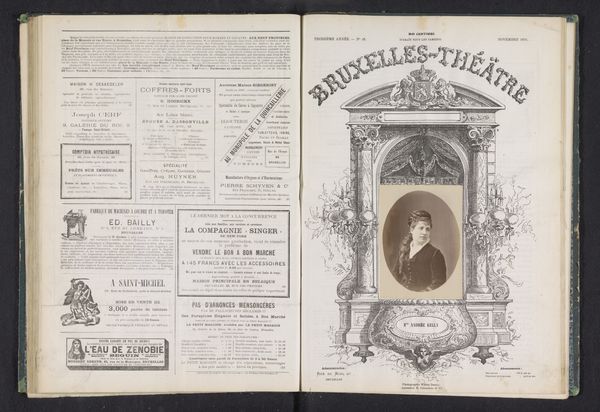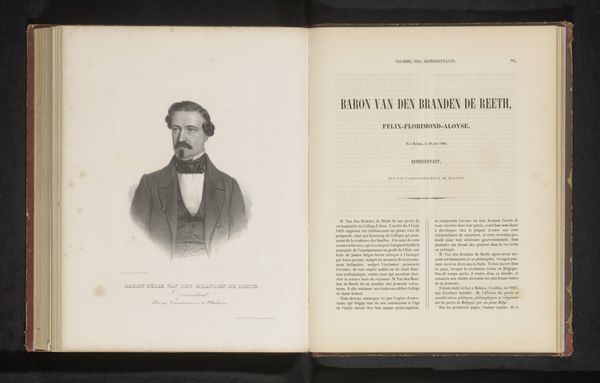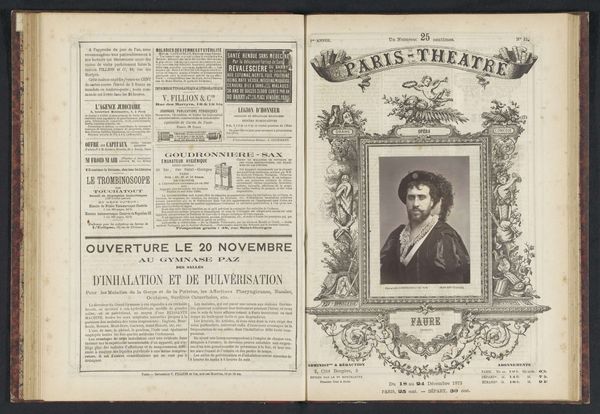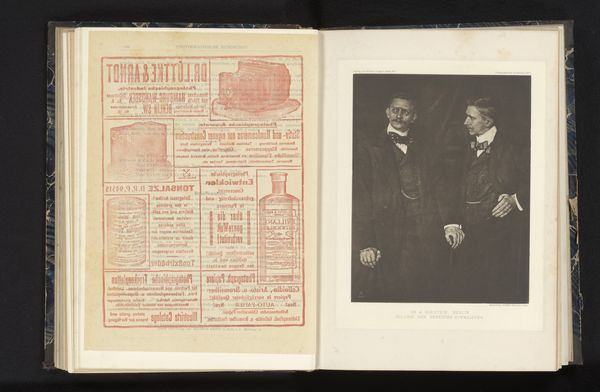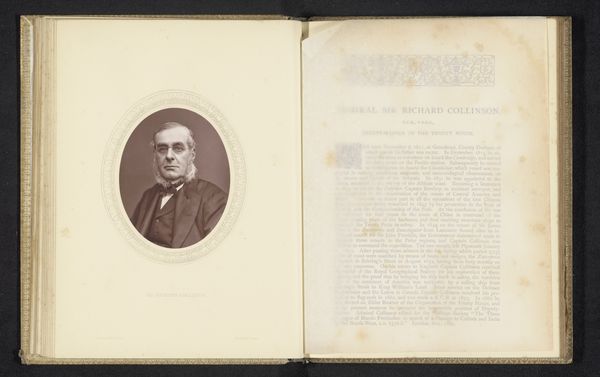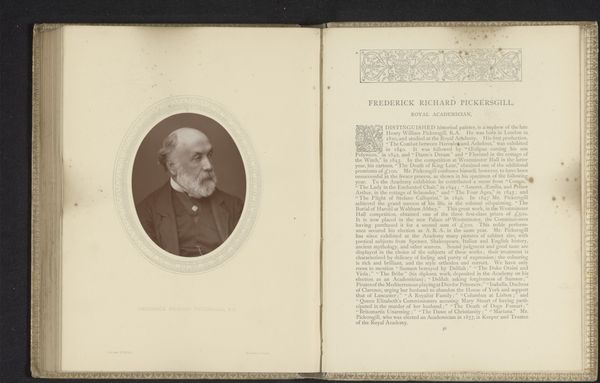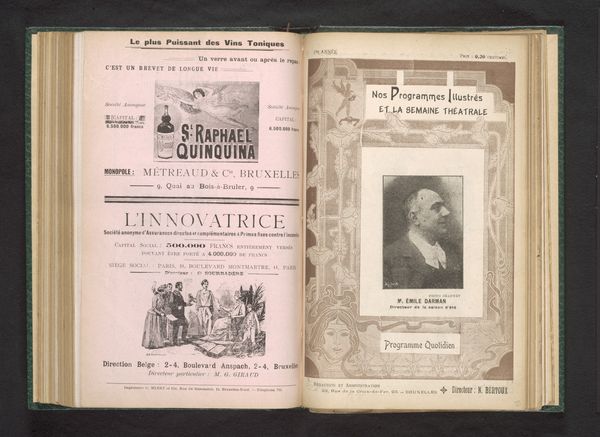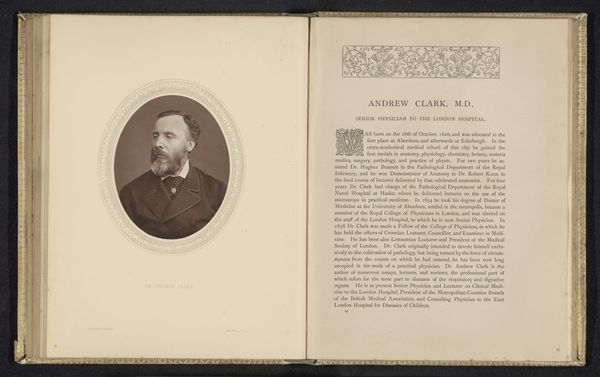
print, photography
#
portrait
# print
#
photography
#
coloured pencil
Dimensions: height 171 mm, width 126 mm
Copyright: Rijks Museum: Open Domain
Curator: This printed photograph is a portrait of Jean de Reszke by Nadar, dating from around 1880 to 1886. We see it here within the pages of what appears to be a larger publication. Editor: Yes, and the entire spread gives it a collage-like feel, where photography meets printed ephemera. I'm struck by the contrast between the formality of the portrait itself, versus the more decorative frame around it with the “Paris-Artiste” heading, along with the commercial advertisements on the adjacent page. How do you read this combination of elements? Curator: Precisely! Consider the means of production – photography rapidly becoming democratized alongside print culture booming to produce consumer culture. The placement of the portrait amidst advertising and popular illustration suggests an effort to commodify the image, transforming de Reszke into a brand as much as celebrating his artistry. Editor: So, rather than viewing it purely as a high art portrait, you’re saying it reflects a moment where art is being integrated into a broader system of material exchange? Curator: Exactly. How does the medium, print photography, challenge traditional boundaries between fine art and mass culture? Was Nadar deliberately subverting the traditional artistic conventions surrounding portraiture, or simply adapting to the changing dynamics of artistic creation within an expanding, commercialized landscape? Think about the economic forces at play and the accessibility print afforded in shaping celebrity and disseminating images. Editor: That makes me consider the labor involved. From the photographer to the printing press operators, it's a whole chain of production that goes beyond a single artistic genius. Curator: Precisely. Each step requires its own skilled workers. Now, think, does this shift your perception of de Reszke himself, the portrayed subject, considering these forces? Editor: Definitely! He is not just an opera singer, but a product of, and participant in, a media machine. Curator: Precisely. It’s fascinating how focusing on materials and processes unveils hidden layers about artistic creation during the rise of mass media.
Comments
No comments
Be the first to comment and join the conversation on the ultimate creative platform.
